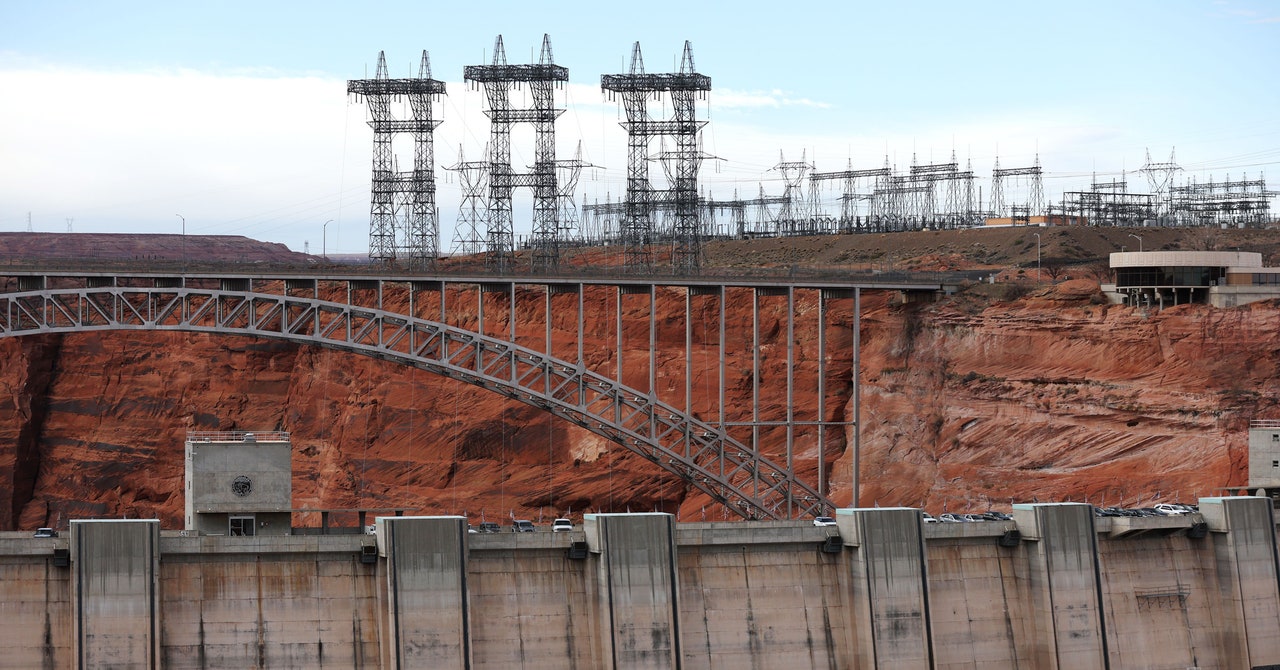
News that Lake Powell, a reservoir on the border of Arizona and Utah, is slowly but surely drying up has spread far and wide. Behind the 1,320-megawatt Glen Canyon Dam and power station, Lake Powell plays an important role in providing power for some 3 million customers in Arizona, Colorado, New Mexico, Utah, and Wyoming.
But this year, the reservoir has hit a historic low, due to ongoing drought conditions in the region that have been attributed, at least in part, to climate change. The dam may even stop producing power if the situation continues to worsen, and this issue is not an isolated one in the American Southwest.
The Colorado River, an important source for many dams and power plants in the region, has been wracked by drought for the past 22 years—some research suggests that it is subject to the worst drought the area has seen in 1,200 years. Further, according to the US Drought Monitor, as of March 29, 88.75 percent of the Western US has been experiencing a moderate drought or worse. According to staff members at the United States Bureau of Reclamation, other dams in this be-droughted part of the country are seeing similar effects—though the officials also noted that each case is different.
According to Becki Bryant, the USBR’s Upper Colorado Basin public affairs officer, there are two main factors that impact hydro production. The first is the amount of water that passes through a dam’s generators. The second is the depth of the body of water that feeds the dams. Deeper bodies of water have more force behind the water rushing through and spinning the turbines of a generator.
Lake Powell and the Glen Canyon Dam make up an extreme case in the US. The dam’s minimum power pool (MPP)—the point at which hydropower can no longer be produced at the dam—is around 1,064 meters. Currently, it is sitting at 1,075 meters. Projections suggest that there is a 23 to 27 percent chance of hitting the MPP each year from 2023 to 2026, according to Bryant. Other parts of the Colorado River Basin, which is home to a few other dams, are being impacted by the drought as well. The 22-year drought has decreased the amount of energy produced in the area by 13.1 percent compared to the average annual energy production in the 12 years preceding it (from 1988 to 1999). “It is difficult to predict actual impacts beyond 2023, but this trend is anticipated to continue,” Bryant said.
California Dreaming
In news that should shock no one in the state, California is also dry. However, the nature of California—which is home to many hydro operations—is somewhat different from Arizona, according to Steven Melavic, chief of power operations with the USBR’s Central Valley Project. Cary Fox, a team lead with the USBR, said that if the Shasta Powerplant’s reservoir were entirely full, it would be a 710-megawatt plant. Currently, the water in its reservoir is low enough that it’s expected to produce a low of around 380 megawatts by the end of the fall.
California’s reservoirs can be quickly replenished, however, thanks to wet storms coming from the Pacific Ocean. “The reservoirs can rebound in a heartbeat. It’s a different kind of dynamic,” Melavic told Ars.
But Fox noted that the reservoirs really only have winter and fall to fill up again with precipitation. “If it does not rain or snow in the winter, that’s it. We kind of have one season … This year, it didn’t happen,” Fox said.


